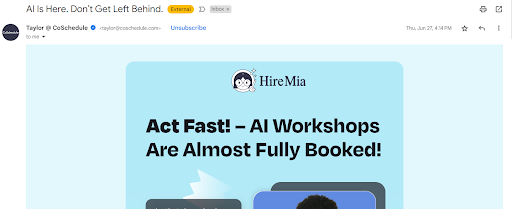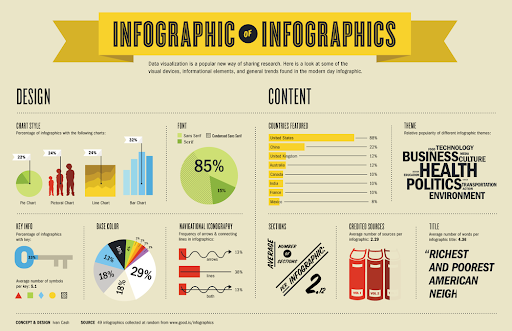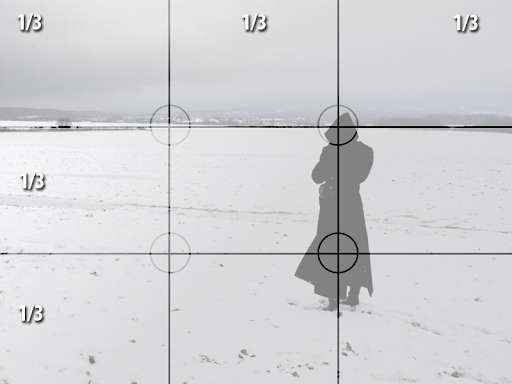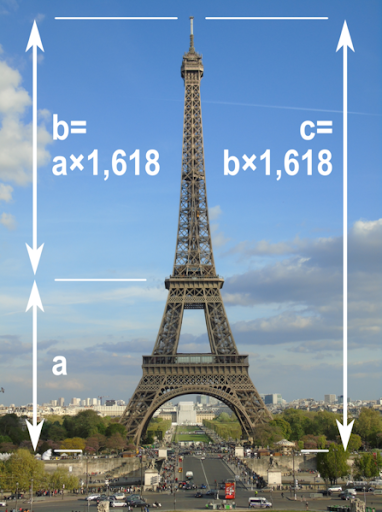25+ Effective Advertising Techniques that Every Marketer Should Know

Have you ever watched a commercial and found yourself thinking about it hours or even weeks later? Maybe you can quote the whole thing from beginning to end. From catchy jingles to emotional stories, effective advertising techniques have the power to captivate and influence us.
Think about Nike’s “Just do it” or Skittles’ “Taste the rainbow.” You may remember buying your first iPhone or MacBook, feeling smarter, cooler, and more professional than your peers – all because of Apple’s incredible brand recognition. They have mastered the art of elevating their products in a way that still resonates today.
What are Advertising Techniques?
Advertising techniques are methods you can use to get people to sit up and pay attention to your ads. It’s getting harder than ever to do this as people are becoming more oblivious to advertising, as indicated by banner blindness, a phenomenon whereby people no longer notice typical online display ads.
Modern advertising techniques often play on emotions or use curiosity to create a buzz.
For example, a real estate marketing campaign could feature a series of video ads showcasing people from various backgrounds moving into their new homes. Each video captures the emotional moment they walk through the door for the first time, focusing on joy, relief, and a sense of belonging. This tells a story and taps directly into the emotional aspect of buying a home, creating a powerful connection with the audience.
Now you know what we mean by advertising techniques, let’s explore the most impactful ones to make your brand unforgettable.
26 Types of Advertising Techniques to Try (With Examples)
1. Storytelling
Storytelling in advertising is all about creating a compelling narrative that resonates with the audience and forging an emotional connection that makes your brand memorable. It’s not just about selling a product; it’s about sharing a story that aligns with your brand’s values and mission.
Video storytelling, in particular, is incredibly powerful. In fact, most consumers (72%!) prefer video marketing to text. Videos combine visuals, dialog, music, narration, and emotional engagement to create a captivating experience, making it easier to convey the message and ultimately driving stronger brand loyalty.
2. Color Psychology
Color psychology in advertising is like a secret weapon. Colors evoke emotions and influence consumer’s decisions.
For example, red grabs attention and creates urgency – perfect for “SALE” signs. Blue builds trust and calm, which is ideal for banks or tech firms. Green represents health and freshness, making it great for eco-friendly products. Yellow, the cheerful color, adds energy and optimism, grabbing attention and lifting spirits.
Combining colors strategically enhances an advertisement’s appeal and strengthens brand identity. When you see an advertisement that resonates, it’s likely the colors are working their magic to make the message stick!

3. FOMO
Creating a sense of urgency is like adding a dash of excitement to your advertisement. When you use phrases like “limited-time offer” or “only a few left,” it’s like a subconscious nudge telling people they better act fast. This strategy taps into the fear of missing out (FOMO) and gets consumers running to make a purchase before it’s too late. It’s a simple way to boost conversions and keep your audience on their toes.

Marketing email from CoSchedule
4. Native Advertising Technique
Native advertising is like the cool guest at a party who blends in perfectly. Instead of interrupting your feed with a glaring advertisement, it matches the look and feel of the platform it’s on. This makes it less jarring and more engaging because it feels like a natural part of the content you’re already enjoying.
Native ads are designed to promote valuable information or entertaining content to the viewer while they are browsing the web and are open to discovering new products or offers. In this way, native advertising keep the online experience smooth and seamless for consumers, building trust and interest without the hard sell. Native advertising is your go-to technique if you want your message to fit right in and capture attention effortlessly.
If you decide to give native advertising a shot, work with a native network like Outbrain to get access to premium publisher sites and high-quality ad inventory.

5. Influencer Advertising Technique
Influencer advertising is all about finding that one cool person who can spread the word about your brand. When you team up with influencers, you’re tapping into their loyal fan base and gaining access to a huge audience. It’s like having a trusted friend give your product a thumbs up, which can make your brand feel more genuine and relatable.
Influencers can share your message in a way that feels natural and authentic and reach a wider consumer base. Partnering with influencers is a powerful way to boost your brand’s visibility and credibility.
6. Sponsorship and Endorsements
Ever seen your favorite celebrity flaunt the latest product on the market? Did it make you more curious or interested to try it? That’s the magic of sponsorships and endorsements.
Brands team up with celebrities to give their products that extra oomph and boost their reputation. Whether it’s a top athlete rocking a new sneaker or a beloved actor sipping on a trendy drink, these partnerships make the products seem like must-haves. Next time you see a famous face promoting something, remember: it’s not just about glamour, it’s about clever marketing at work!

7. Bandwagon Effect
Notice how everyone seems to be raving about the latest trend? That’s the bandwagon effect in action! It makes you think, “If everyone’s doing it, it must be awesome.”
Brands use this psychological trick to show you that their product is a hot commodity, so you’ll want to hop on the bandwagon. It’s all about creating an irresistible buzz and making you feel like you’re missing out if you don’t join in. If you want to try this advertising technique, remember, it’s not just the product that’s great – it’s the crowd. Apple does a great job of capturing this sentiment in just 10 simple words in the the ad headline below

8. Emotional Appeal
Ever wondered why those tear-jerking advertisements stick with you? That’s the emotional appeal at work, tugging on your heartstrings. By tapping into emotions like joy, fear, or nostalgia, ads can create deep connections with viewers. This technique isn’t just memorable; it’s powerful enough to drive your choices and actions. When you see an ad that makes you feel all the feels, know that it’s designed to make you take action. Who doesn’t feel more inclined to chew Extra gum after watching the emotional ad below?
9. Association Marketing
Think sports drinks and athletes. Pepsi and singers. Willy Wonka and chocolate. That’s association marketing doing its job by linking products with certain values or traits – like performance or luxury – so that brands can appeal directly to your interests. When a product is tied to something you value, like fitness or sophistication, it makes you more likely to grab it off the shelf. If you add an influencer or celebrity, it’s a double whammy.

10. Social Proof
Word-of-mouth is strill the most powerful marketing method, accounting for 20% to 50% of all purchase decisions! It’s also the basis for the advertising technique known as ‘social proof’.
Social proof uses testimonials, reviews, and user-generated content to build trust and credibility. Seeing real people rave about a product makes you think, “Hey, if they love it, I will too!” It’s like having a trusted friend vouch for a product before you take the plunge. With so many options out there, reviews and feedback hold weight and can be the final thing to sway a consumer to buy.
Social proof is a big part of Amazon’s user experience, for example, with star ratings and reviews flooding the site and fueling purchases.
11. Landing Pages
When a consumer clicks on a digital ad, that’s only half the experience. The next stage is the landing page they arrive at. Having shown interest in the ad, the landing page must now take them even deeper on the journey with the advertiser.
Effective landing pages are crucial for converting traffic from ads. They should keep the consumer on the page and keep them engaged.
If you’ve ever clicked on an ad only to be greeted by a super clear, convincing page, that’s a landing page doing what it should! The landing page delivers a powerful message and call to action to convert your click into a concrete move, such as making a purchase or requesting more information.
12. Symbolism
Symbols are like visual shorthand – they convey big ideas quickly! Ths makes symbolism an ideal advertising technique when you need to catch consumer attention fast.
Think of the heart symbol for love, a red apple for education, or a green light for “go”. In advertising, symbols quickly communicate a brand’s core message or values, making them memorable and enhancing brand identity. If used correctly, they can create engagement, enjoyment, and understanding all in one quick glance.

13. Rule of Thirds
Want your visuals to pop? Use the rule of thirds! This technique divides an ad into nine equal parts, helping you place key elements along the lines or intersections. It creates balanced, engaging visuals that take your eyes where they need to be, grabbing your attention and keeping you hooked. This isn’t only useful for online ads but also a common advertising technique in video commercials. An image is meant to say a thousand words, and when it’s an advertisement, you want it to say so much more.

Source (Courtesy of Michelle E. Cottyn)
14. Brandformance
Branding and performance go together like a horse and carriage? Yes. Brandformance blends the best of both worlds – creating brand awareness and driving conversions. It’s a hybrid strategy that ensures your brand not only gets noticed but also gets action. It’s like hitting two advertising goals in one brilliant move!
“Brandformance marketing promises to bridge the gap between the more granular, rigorous approach of performance marketing and brand building’s looser, creativity-centric priorities. They no longer need to fight one another for space.”
Brandformance 101: Outbrain blog
15. Infographics
Struggling to explain complex information? Infographics are an eye-grabbing advertising technique that lets you do just that. These visual wonders simplify data and make it easier and more enjoyable to understand. By turning statistics and facts into easy-to-digest visuals, infographics make your message clear and memorable. You can use colors to make it pop and grab the reader’s attention or keep it simple and direct. They’re like a friendly guide to your brand’s information.
Check out the classic “Infographic of Infographics” by Ivan Cash, which explains everything you need to know about infographic marketing, in an infographic!

16. Attention Targeting
In a world full of distractions, grabbing attention is key. Attention targeting is a fairly new digital advertising metric that measures actual the actual attention level of viewers as they interact with your ads.
Traditional metrics, like impressions or viewability, are vague. They can tell you how many times an ad is ‘seen’, but don’t really provide actionable data about whether or how much the audience is really paying attention to the message. Attention metrics capture a range of factors to calculate an ‘Attention Score’, including eye tracking, dwell time, scroll depth, contextual alignment, and other proxy signals. Combined with predictive AI, the Attention Score can tell you the ad’s true performance, and not just how many scroll-bys it received. That’s powerful information!
17. Statistics and Figures
Numbers don’t lie. Using statistics and figures adds credibility and power to your claims. When you back up your message with solid data, you give your advertisement a boost of authenticity that is crucial to building trust and persuading the audience to try or buy. Also, when used correctly, numbers catch the eye and attention more powerfully than words. If you’ve got convincing numbers at hand, be sure to use them in your ads.

18. Video Advertising
Video advertisements are the star of the show, getting average click-through rate of 1.84% that banner ads could only dream of (display ads get an average CTR of just 0.5%)
Unlike static ads, videos can evoke emotions (see advertising technique #8), demonstrate products in action, and convey messages more dynamically, capturing attention quickly. With the rise of social media, native networks, and streaming platforms, video content is highly shareable, increasing its reach and potential for virality. Video advertising a powerful way to build brand awareness, drive conversions, and connect with consumers on a deeper level, ultimately leading to higher engagement and ROI.
For example, UK retailer John Lewis’ Christmas commercial has become an annual tradition. Consumers eagerly wait for its release to see this year’s creative angle and story. It is often seen as a cultural barometer, reflecting the zeitgeist in the advertising world.
19. A/B Testing of Headlines and Images
This advertising technique involves testing two versions of the same ad – each with a different headline or image – to see which performs better. By analyzing real results, A/B testing helps you identify what connects most with your audience. This way, you can fine-tune your advertisements based on actual performance data, and create new ads that you know will get higher engagement.
20. Advertorials
Advertorials are one of the oldest modern advertising techniques, the precursor to digital native ads. They blend interesting editorial content with promotional messages, offering readers valuable insights or tips while subtly trying to steer them toward the product or service they’re selling. Advertorials combine the best of both worlds – editorial and advertising – and they have always gotten results. This explains why they have been around for so long, like this advertorial for a breakfast cereal that looks and reads as a cartoon, from the 1930s.

21. Programmatic Advertising
Ever feel like your phone can hear you when you mention wanting a trip to Greece, then bam! An ad for a cruise to the Greek Islands? Programmatic advertising uses automated systems to buy and place ads efficiently, ensuring your ads reach the right audience at the right time.
Programmatic advertising leverages enormous amounts of data to analyze and understand audience behavior, and uses automated systems and algorithms to place the right bids on behalf of advertisers so they get the best possible ad placement at the best price.
The fact that programmatic advertising is automated makes it a powerful and efficient advertising technique for advertisers. Ad placements can adjust in real time, without extra work by advertisers, improving engagement and optimizing ad spend at the same time.
22. Contextual Advertising
Do you have ads that magically align with what you’re into right now? That’s the wonder of contextual advertising. It’s all about matching ads with the content you’re currently enjoying so they hit you with precisely what you’re interested in. The matching puzzle piece.
Imagine it as ads that have a sixth sense – they know what you’re reading, watching, or searching for, and they serve up content that feels very well-timed and relevant. However, there’s no magic behind it. Contextual advertising relies on web crawlers and algorithms to understand the contect of a web page and serve ads that match the topic.
23. CTAs
A call-to-action (CTA) is possibly the most important single element of a digital ad, as it drives the viewer to take another action towards conversion. An effective CTA combines clarity and excitement, creating a buzz that makes you want to take the next step and interact with the brand or business. Whether you’re clicking to buy the latest gadget or signing up for a must-read newsletter, a great CTA must be motivating.
There are several best practices to creating CTAs that work. A good CTA is a combination of , factors woring together to grab viewer attention and spark urgency to click, including copy, design, placement, and even color.
24. Humor
Who doesn’t enjoy a good laugh? Humor in ads is like a breath of fresh air, making your message not just memorable but downright shareable. When humor hits the mark, it crafts a positive, engaging vibe around your brand, making you the life of the party in your audience’s eyes. When done right, funny ads are the secret ingredient to turning everyday marketing into a delightful experience, and if they go viral, we’ll you’ve hit the advertising jackpot!
25. GenAI
When advertising techniques meet the future! Generative AI helps advertisers create original, engaging content, from videos to advertisement copy, without needing to break the bank. Use GenAI to brainstorm new ideas, generate creative concepts, and design visuals that look like a million dollars.
GenAI tools can also provide detailed insights into an ad’s performance allowing the advertiser to fine-tune their strategies in real-time. With Generative AI, your campaigns won’t just be on point; they’ll be attractive, on target, and highly effective.
26. Visual Design
Visual design is all about how we arrange elements in an ad. The two main things to pay close attention to when producing an ad design are the Rule of Thirds and the Golden Mean.
The Rule of Thirds is a guideline used in photography, art, and design to make images more visually interesting and well-balanced. Imagine dividing an image into nine equal parts by placing two equally spaced horizontal lines and two equally spaced vertical lines across it, kind of like a tic-tac-toe board. When you’re setting up a shot or designing an ad, placing the main elements of your composition at the points where these lines intersect helps naturally catch the viewer’s eye. If you’re placing text or a key piece of content in a design, aligning it along the lines or at intersection points to make your design more aesthetically pleasing.

The Rule of Thirds applied to photography Image source
The Golden Mean (or golden ratio) is a mathematical principle that’s widely used in art and design to create harmonious compositions. It’s based on a ratio of 1 to 1.618 (approximately). In simpler terms, it’s a way of dividing a space where the smaller part relates to the larger part in the same way that the larger part relates to the whole.
In visual terms, this might sound a bit complex, but it’s about creating proportions that are naturally appealing to the human eye. You often see it in nature, like in the spirals of seashells or the arrangement of leaves on a stem, and it has been used by artists and architects for centuries.
When applied to design, elements are placed according to this ratio to achieve a sense of balance and elegance. For example, in a layout, you might position the most important element or focal point at about 61.8% of the way across the space, rather than right in the center. This can make the design feel more dynamic and engaging.

The Golden Mean as shown in the Eiffel Tower design Image source
When it comes to creating ads, you can apply these principles to place focal points that draw people’s eye first, such as a striking image or bold headline in the correct proportion. They help set the stage for the message you want to communicate.
You can then use visual paths and points of interest, which are lines or arrangements that lead the viewer’s eye through the ad in a way that tells the story best.
For instance, a Z pattern might start at the top left with a logo, zigzag through some appealing images or key benefits in the middle, and end at a call-to-action button on the bottom right. This makes the viewing experience intuitive so that by the time you’re done looking at the ad, you’ve absorbed the key messages almost without realizing it.
27. Interactive Content
Animation is a great tool to bring ads to life and tell a more engaging story. Whether it’s a character moving across the screen, a graph that builds itself before your eyes, or simply text that bounces, slides, or fades into view, animation makes your content pop. As well as being flashy, animations can also help make complex information easier to digest.
Augmented reality (AR) is another powerful interactive advertising technique that lets people interact with digital elements superimposed on the real world through their smartphone cameras or AR glasses.
The award-winning Lynx Excite campaign was a clever piece of AR advertising. In a busy train station, they put a big sign on the floor saying “Look up”. Curiosity got the better of people, who looked up to see themselves on a massive screen with a digitally animated angel falling from the sky to the ground next to them. People’s reactions were priceless, with many looking down to the ground to see if it was real!
28. Psychological Engagement
You can also use psychological techniques to get more ad engagement. You’ve seen those ads where the person seems to be looking right at you? That’s because making eye contact, using techniques like direct gaze or three-quarter gaze, is a highly effective form of direct engagement. It makes you feel like the ad is speaking to you personally, creating a stronger emotional bond.
Body language plays an important role too. An open posture, a smile, or a thoughtful look can convey trust, happiness, or introspection, which aligns with the message of the ad and makes it more relatable.
Another technique that has been shown to be psychologically effective is “unfinished ads”. They bring out curiosity in people by leaving the message incomplete or posing a cliffhanger. Clickbait is a crude example of this, but you can do it more subtly by posing a question at the end of your ad or starting a story that viewers must follow to another platform or episode to see the conclusion.
Other ways to use unfinished ads include showcasing the beginning of a transformation brought about by your product, with a prompt that leads viewers to your website or a campaign landing page to see the result. It’s like showing the before and saying, “Visit us to see the amazing after.”
Unfinished ads work because they tap into the Zeigarnik effect, a psychological phenomenon where people remember uncompleted or interrupted tasks better than completed ones. By not giving the full story, you’re making your ad stickier in the viewer’s memory, keeping your brand top of mind.
Advertising Techniques to Put You Back in the Game
Incorporating these advertising techniques can transform your ad campaigns into more engaging, persuasive, and effective experiences. Whether you’re a seasoned marketer or just beginning, these strategies will help you connect with your audience and achieve your advertising goals. Start experimenting with these advertising techniques today and watch your brand grow.
FAQ
What is the most common technique of advertising?
The most common technique of advertising is storytelling as it generates emotional appeal. It’s used across almost all mediums because tapping into emotions, whether it’s joy, fear, nostalgia, or excitement, connects powerfully with people.
When an ad triggers an emotional response, it’s much more memorable and persuasive. Think about those story-driven heartwarming holiday commercials or ads that make you laugh out loud. They stick with you because they make you feel something.
Which advertising technique is most effective?
Again, it’s storytelling! When an ad tells a compelling story, you’re just pushing a product, you’re creating a narrative that people can relate to. This makes your brand feel more relatable and trustworthy.
Native ads are also quickly becoming one of the most effective advertising techniques, as they don’t disrupt people’s flow. These ads match the form and function of the platform they’re on, whether it’s a social media feed or a news site.
What are the 5 steps of advertising?
- Identify the target audience: Before you start crafting your message, you need to know who you’re speaking to – who they are, what they need, and what motivates them. The more detailed your target audience profile is, the more effective your ad will be.
- Set advertising goals: What do you want to achieve with this campaign? Brand awareness, driving sales, or promoting a new product? This guides the creative direction and metrics you’ll use to measure success.
- Create the message: Craft a clear and engaging message that speaks directly to your target market. Use storytelling, emotional appeal, striking design elements or other advertising techniques to grab attention and communicate your message.
- Choose the advertising channels: Once you have your message, you need to decide where it will be seen. Is your audience hanging out on social media, watching TV, or reading magazines?
- Measure and adjust: Track your ad campaign performance using analytics tools to measure against your goals. Then, tweak or optimize the campaign on an ongoing basis.
What are techniques in writing an effective advertisement?
- Use a strong Call-to-Action (CTA): Always include a clear and direct call to action. Whether it’s “Buy Now,” “Learn More,” or “Sign Up Today,” your CTA should tell the audience exactly what to do next and create a sense of urgency.
- Start with a strong hook: You’ve only got a few seconds to catch someone’s attention, so your opening line needs to be punchy. Use an emotional hook, such as a provocative question, curiosity-driven statement, or joke structure.
- Focus on benefits, not features: Instead of just listing what your product does, explain how it solves a problem or improves the customer’s life. Focus on why it matters to them personally.
- Keep it simple and direct: Avoid jargon or overly complicated language so it can be understood quickly, especially for ads with limited space like banners or social media.
- Create a sense of urgency: Phrases like “Limited Time Offer” or “Only a Few Left” tap into FOMO (fear of missing out) and push people to take action sooner rather than later.
- Leverage social proof: Include customer reviews, testimonials, or star ratings. When people see others are happy with the product, they’re more likely to trust it themselves.

